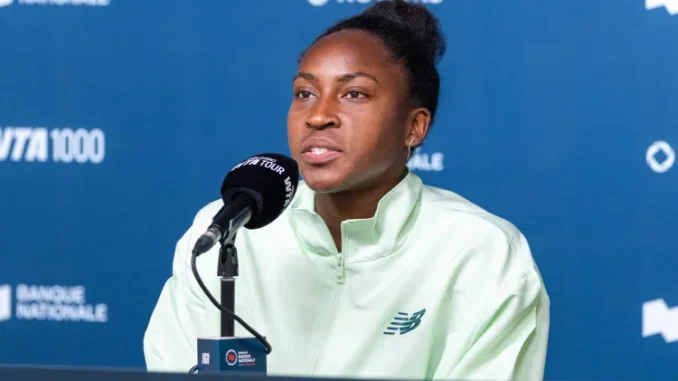
Coco Gauff has spoken out amid growing tensions between top tennis players and Grand Slam organisers over prize money distribution, insisting the movement isn’t about self-interest but about fairness for all competitors across the sport.
Speaking this week, the world No. 3 explained that the campaign, led by a group of high-profile players, is pushing for a greater share of the revenue generated by the four majors — the Australian Open, Roland Garros, Wimbledon, and the US Open — to be allocated to players. “I think the biggest message is not just to benefit us, it’s to benefit all the players,” Gauff said, stressing that the movement aims to create a more balanced and sustainable system for everyone on tour.
The 20-year-old American is one of several top names who have signed a new letter sent to Grand Slam organisers, urging them to review their prize money structure. According to Gauff, the signatories represent not just the elite, but the wider player base. “It’s a representation of the tour — within the top 200 or top 300,” she explained. “Unfortunately, it’s like that: the top players, you can put more pressure, your voices are heard a little bit more. We try to take advantage of that and use it.”
The dispute has been building for months as players seek a more equitable share of tournament revenue. Despite the record-breaking profits and rising broadcast deals enjoyed by major tournaments, many players feel that the current prize money structure does not reflect the sport’s financial growth. At present, only a small percentage of total Grand Slam revenue is distributed as prize money, and lower-ranked players often struggle to cover travel, coaching, and accommodation expenses throughout the season.
Gauff’s comments reflect a growing belief that tennis needs to better support players beyond the top tier. “We want to make it better, not just for us but throughout the field,” she said. The 2023 US Open champion added that even modest increases for early-round competitors could make a huge difference, particularly for those ranked outside the top 100, who often rely on small earnings to sustain their careers.
The push for change extends beyond financial matters. Players have also been calling for improved welfare provisions, including better healthcare, pension plans, and more transparent scheduling to reduce burnout and injuries. Advocates argue that with the sport’s global popularity and commercial success, organisers can afford to reinvest more meaningfully in the athletes who drive the spectacle.
Some progress has been made in recent years, with incremental increases in prize money and efforts to narrow the gap between early-round and champion payouts. However, many players believe that the current model remains outdated. They want a revenue-sharing system similar to other major sports leagues, where athletes receive a fixed percentage of total income.
The latest letter marks the second time in 2025 that a coordinated group of players has raised the issue, signalling a more unified and organised approach than in previous years. While not every star has signed on, Gauff insists that the focus remains collective. “This isn’t about one or two players. It’s about all of us coming together to create a fairer system,” she said.
As discussions continue, Grand Slam organisers have yet to publicly commit to major structural changes, though they’ve acknowledged ongoing talks with player representatives. For Gauff and her peers, maintaining pressure is key. “If you have the platform, you use it,” she emphasised. “We try to take advantage of that and use it.”
Her message is clear: tennis’s biggest stages owe more to the athletes who make them possible. And if this movement succeeds, it could reshape the financial landscape of the sport for generations to come — ensuring that every player, not just the stars, can pursue a sustainable career.
Leave a Reply